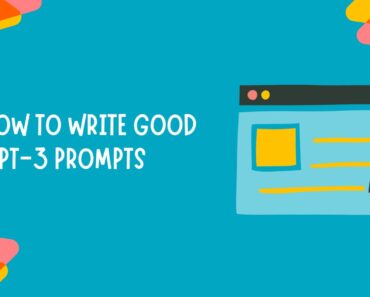GPT-3 (Generative Pretrained Transformer 3) is a large language model developed by OpenAI that can generate natural language text based on a given prompt. GPT-3 is capable of generating a wide range of outputs, from coherent sentences and paragraphs to structured data like tables and lists. But to get the best results from GPT-3, you need to know how to write good prompts. Here are some tips on how to write good GPT-3 prompts.
Table of Contents
Start with a clear and specific prompt.
GPT-3 is a large language model, so it can generate a wide range of responses to a given prompt. To make sure you get the response you’re looking for, it’s important to start with a prompt that is clear and specific. For example, instead of saying “Write a story,” you could say “Write a story about a young girl who discovers a mysterious book in an old library.”
Provide context and background information.
GPT-3 is trained on a large amount of text data, but it doesn’t have access to the same context and background information that a human writer would. To help GPT-3 generate more relevant and accurate responses, you can provide some context and background information in your prompt. For example, if you’re asking GPT-3 to write a story set in a specific time and place, you could include that information in the prompt.
Use appropriate prompts for the desired output.
GPT-3 is capable of generating a wide range of outputs, from natural language text to structured data like tables and lists. To get the best results, it’s important to use prompts that are appropriate for the desired output. For example, if you want GPT-3 to generate a list of items, you could use a prompt like “Please generate a list of 10 items that might be found in a typical kitchen.”
Be specific and actionable.
Like any AI model, GPT-3 works best when it knows exactly what you want it to do. To get the best results, make sure your prompt is specific and actionable and provides clear instructions on what you want GPT-3 to generate.
Additional Considerations
Limitations of the model.
GPT-3 is a powerful tool, but it is not perfect, and it may not always generate the exact response you’re looking for. In some cases, you may need to provide multiple prompts or additional context to help GPT-3 generate the desired output.
Quality of the generated output.
GPT-3 is trained on a large amount of text data, but the quality of that data can vary, and the generated output may not always be grammatically correct or coherent. It’s important to carefully review the generated output and make any necessary edits or corrections.
GPT-3 as a tool for human writers.
GPT-3 is not a replacement for human writers. It is a tool that can help you generate ideas, text, and data, but it is not capable of the same creative and critical thinking skills as a human. As such, it’s important to use GPT-3 as a tool to assist your own writing, rather than relying on it to do the writing for you.
Conclusion
In conclusion, writing good GPT-3 prompts requires a combination of knowledge, skills, and experience. By following the tips outlined above, you can create effective prompts that help GPT-3 generate high-quality output. However, it’s important to keep in



